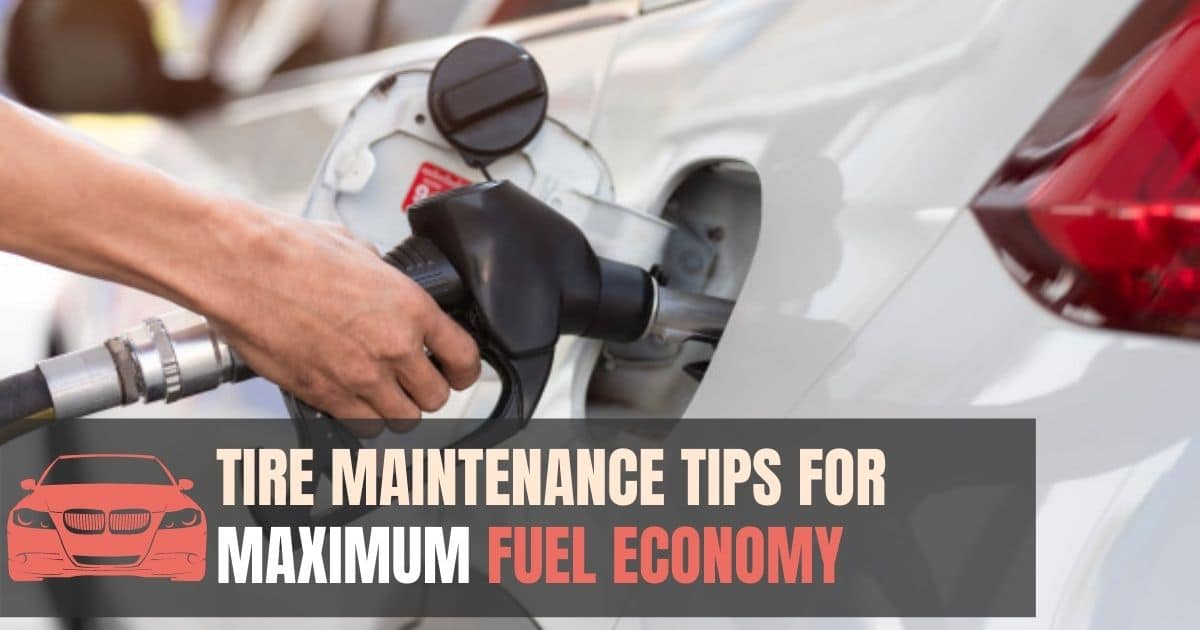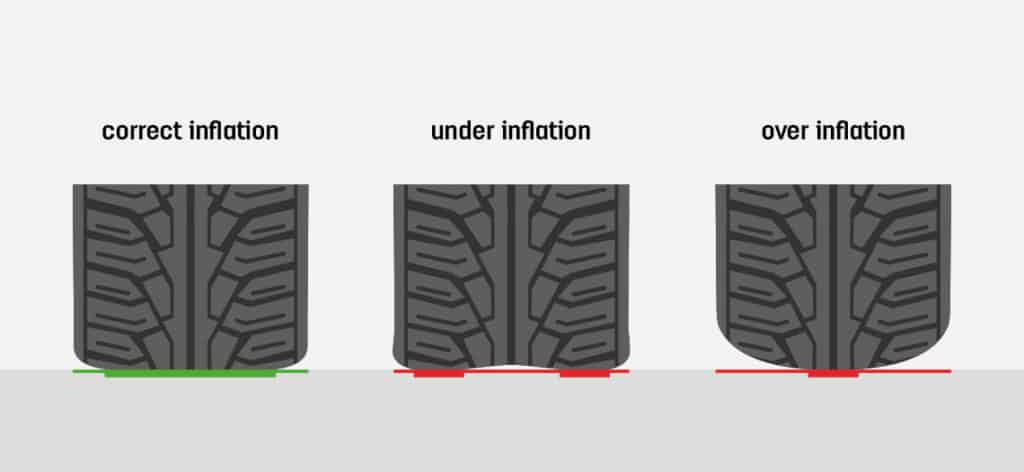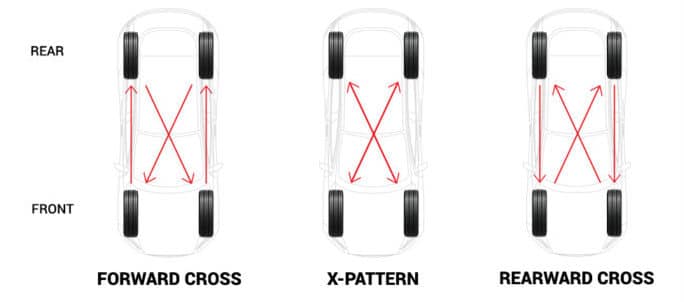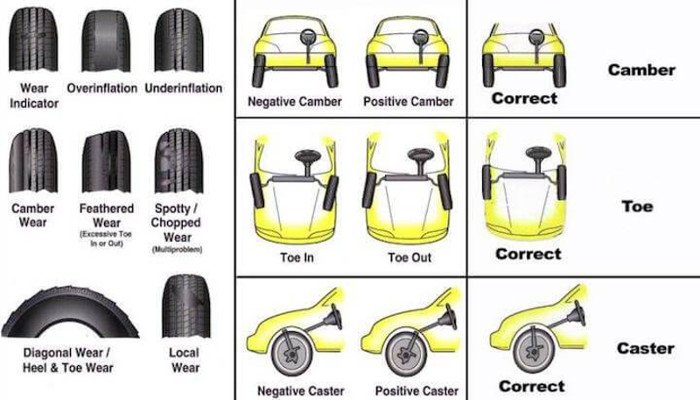It may come as a surprise to some that your tire condition will affect your vehicles fuel economy. Taking the necessary steps in tire maintenance will help you cruise economically. There are specific technical and maintenance tips you can use to squeeze out the maximum fuel economy from your tires. Simple tasks like regular inspections can prove a massive difference in how much you spend at the gas pump.
Here are the basics of what you need to do for maximum fuel economy:
- Keep tires inflated to recommended PSI
- Have your tires rotated when needed and on a schedule
- Have your tires aligned when needed and on a schedule
The principle of fuel economy lies in the tires’ rolling resistance, even wear and tear on the tires, types, and size of the tires, and the tire inflation. Minimizing your gas usage will be beneficial to your financial budget and help in environmental conservation. It would help if you were adept at your tire specifications to help you make the correct decisions regarding your tire and fuel economy.
Most people usually think tire maintenance procedures have nothing to do with how much you spend on gas. Far from it, performing routine tire maintenance impacts your drive, budget, and how efficiently your vehicles uses fuel. It is up to you as the owner to educate yourself on the dos and don’ts and use them in your favor. The more you know about tire care, the better you can maximize fuel economy.
Tire Tips For Maximum Fuel Economy
Here we will discuss the 3 most impactful things you can do related to your tires to save on gas…
Keep Tires Inflated to Recommended PSI
Inflating your tires with the correct amount will affect your vehicle’s stability and fuel economy. It would help if you were careful about underinflating or overinflating.
Most vehicles will have manuals where you can confirm the recommended or maximum tire pressure of the car. If you don’t have the manual you can also look it up online. There is no excuse to use inappropriate tire pressure values for your set of tires. Stick to the recommended amount to ensure proper acceleration, steering, and braking during your daily drives. Avoid using the maximum tire inflation rates for the good of your tires. If your TPMS recommends adding or reducing PSI, don’t let the issue linger.
You need to inspect your tires once a month, preferably before a drive, during your routine check. Check on any irregular bulges or cracks that may be affecting your tire pressure. Taking a look at your tires before your drive will give you a good account before you leave. It will rule out any punctures that may deflate the tires which will increase your fuel consumption.
It takes a keen eye and ear to analyze the tire pressures while driving. Please do not assume any sign that may point towards tire inflation problems. Apart from the monthly inspection, ensure you check, replace, or inflate your tires on a need-to-need basis. It will help you avoid higher costs in gas and repairs. Remember always to adjust your tire pressure concerning your vehicle’s load. It has a significant bearing on the pressure and rolling resistance which are critical influences in fuel consumption.
Inflating Tires With Nitrogen Gas…
Many people now are also inflating tires with nitrogen, which is more dense and may help tires stay inflated longer. The jury is still out on if Nitrogen is worth the price since you can get oxygen for free, but it may be worth considering in certain situations. If your tire was to have an air leak, nitrogen would leak about 1/3 of the rate of speed of oxygen. That means your tire will stay inflated for longer and assist your tread in wearing more evenly.
Keep Your Tires Rotated
In any vehicle, rotating your tires will increase their performance and increase its longevity. The front and rear wheels’ functionality typically differs depending on the type of drive. Different types of vehicles will also determine the amount of energy required on the set of wheels. Whether it is an AWD or a 2WD, a tire rotation will come in handy to increase your performance and consumption. There are numerous rotation methods that you can use to ensure your tires remain well-balanced.
You will find more wear and tear on the front set of wheels for some vehicles due to the higher torque on them. It may reduce the rolling resistance, but there is no assured grip or slip factor affecting fuel consumption. You need to rotate your tires every half year or between 8000 – 10000km (approximately 6000 miles), whichever is quicker.
If you require a tire replacemnet and need to roate some new tires in, you put new tires in the back and the worn tires to the front. This will help you have better tracion and ensure maximum fuel economy.
Keep Your Tires Aligned
Proper tire alignment affects the steering, balance, and wear and tear. It is more likely for an aligned vehicle to have less fuel consumption due to the coordinated and smooth movement of the tires and cars. There is less friction during the drives, thus reducing the amount of torque dispensed to facilitate motion. In turn, there will be reduced fuel consumption.
Improper alignment often causes uneven wear and tear, which will cost you repairs and replacements. If you are experiencing steering problems or wobbling and instability when driving, you need to check on the wheel alignment as it will also affect your fuel consumption.
Take your vehicle for alignment at least every year or once you do 25,000km (16,000 miles). You can also schedule alignment on a need basis; if you do not feel comfortable with how your car is driving. Most commonly, the tell tale sign is if it is pulling towards one side or the other when you have the steering wheel pointed straight.
Avoid Common Mistakes That Use More Gas…
Sometimes when you have an issue like a tire that is losing air or flat, you may think about replacing just the one tire. While that is possible, you can create an imbalance and therefore hurt your fuel consumption. If you do have to replace just one tire you should ensure that it is the right size, has a similar direction tread pattern, and you put it on the rear.
Other things that will impact your fuel economy will be your speed. Tires with lower speed ratings will impact your gas consumption. Knowing what your tires speed rating is can help your drive within the appropriate speed range to get the most fuel efficient benefits.
Getting Maximum Fuel Economy From Your Tires – Conclusion
With gas prices so high, squeezing out every bit of mileage from your tank is critical. Getting the maximum fuel economy from your vehicle goes beyond your vehicles engines gas mileage statistics. Simple inspections and maintenance of your tires can pay you dividends at the pump. Make it a habit to schedule tire alignment, rotation, and inflation checks. It will hugely save you on the cost of fuel and tires too.
You may also be interested in 5 Car Parts to Replace to Improve Gas Mileage.



